This article was medically reviewed by Troy A. Miles, MD. Dr. Miles is an Orthopedic Surgeon specializing in Adult Joint Reconstruction in California. He received his MD from the Albert Einstein College of Medicine in 2010, followed by a residency at the Oregon Health & Science University and fellowship at the University of California, Davis. He is a Diplomat of the American Board of Orthopaedic Surgery and is a member of the American Association of Hip and Knee Surgeons, American Orthopaedic Association, American Association of Orthopaedic Surgery, and the North Pacific Orthopaedic Society.
There are 11 references cited in this article, which can be found at the bottom of the page.
wikiHow marks an article as reader-approved once it receives enough positive feedback. In this case, 82% of readers who voted found the article helpful, earning it our reader-approved status.
This article has been viewed 177,758 times.
A sore shoulder is a relatively common problem among both men and women of all ages. Shoulder soreness can be caused by muscle strains, ligament sprains, joint dislocations and even mid back or neck issues. The most common reasons for developing a sore shoulder are exercising too hard, sports injuries and work-related mishaps.[1] Most sore shoulders are self-limiting and fade away within a week — sometimes quicker if you take care of it at home appropriately; however, sometimes sore shoulders need professional help for complete resolution.
Steps
Treating a Sore Shoulder at Home
-
1Rest your sore shoulder for a few days. The most common cause of a sore shoulder is either overuse (repetitive shoulder movements) or overexertion (lifting things that are too heavy). If this is likely the cause of your sore shoulder, then stop the causative activity for a few days and rest it.[2] Consider asking your boss if you can temporarily switch work stations or jobs to something less repetitive and demanding on your shoulders. If your sore shoulder is caused from working out at the gym, then you may be lifting too heavy or using bad form — ask a personal trainer or athletic therapist for advice.
- Resting your sore shoulder for a few days is helpful, but putting it in an arm sling is not a good idea because it can lead to "frozen" shoulder syndrome. Your shoulder needs to move a little bit in order to stimulate blood flow and healing.[3]
- Shoulder soreness is usually indicative of a simple muscle strain or pull, whereas sharp pains are indicative of joint/ligament injuries.
-
2Apply ice to an acutely sore shoulder. If your sore shoulder developed recently and looks or feels inflamed, then apply a bag of crushed ice (or something cold) to the most tender part in order to reduce inflammation and numb the pain. Ice therapy is most effective for acute (recent) injuries that involve some sort of swelling because it reduces blood flow. Apply the crushed ice for 15 minutes 3-5x daily until the soreness subsides or completely fades away.[4]
- Compressing the crushed ice against the sorest part of your shoulder with a stretchy Tensor or Ace bandage is even more helpful for combating inflammation.
- Always wrap ice in a thin cloth before you apply it to any body part — it helps to prevent skin irritation or frostbite.
- If you don't have crushed ice handy, then use ice cubes, frozen gel packs or a bag of frozen veggies (peas or corn work great).
Advertisement -
3Apply moist heat to a chronically sore shoulder. If your sore shoulder has been bothering you for many weeks or months, then it's considered a chronic injury. Avoid cold therapy for chronic injuries and use moist heat instead. Moist heat warms up muscles and other soft tissues by increasing blood flow, which can be helpful for soreness caused by old sports injuries and arthritis.[5] A good source of moist heat is microwavable bags filled with grains (such as wheat or rice), herbs and/or essential oils. Zap the herbal bag in the microwave for about 2 minutes and then apply it to sore muscles for 15 minutes first thing each morning or before any significant exercise.
- Adding lavender or other specific essential oils to your herbal bag can help reduce your discomfort by relaxing you.
- Taking a warm bath is another great source of moist heat. Add a cup or two of Epsom salt to the bath water for even better results — its high magnesium content relaxes and soothes tight muscles and tendons.
- Avoid applying dry electrical heat from standard heating pads because it can dehydrate muscles and increase the risk of injury.
-
4Take over-the-counter (OTC) medication. If your sore shoulder ache isn't impacted greatly by applying ice or moist heat, then consider taking some OTC medication short term. Anti-inflammatories such as ibuprofen (Motrin, Advil) or naproxen (Aleve) are likely best for shoulder soreness that also involves significant inflammation — common with bursitis and tendinitis of the shoulder. Painkillers (also called analgesics) are likely better for shoulder pain without much swelling, such as low-grade muscle strains and osteoarthritis (the wear and tear type). The most common OTC painkiller is acetaminophen (Tylenol, Paracetamol).[6]
- Anti-inflammatories and analgesics should always be considered short-term strategies for pain control. Taking too much of them at a time or taking them for too long increases your risk of stomach, kidney and liver problems.[7]
- If your sore shoulder feels extremely tight and is spasming, then an OTC muscle relaxant (such as cyclobenzaprine) might be a more effective medication.[8] OTC muscle relaxants may not be available in the United States and must be obtained from a doctor.
- As a safer alternative, rub a cream/lotion/ointment that contains a natural pain reliever into your sore shoulder. Menthol, camphor, arnica and capsaicin are all helpful for relieving musculoskeletal pain.
-
5Do some shoulder stretches. Your sore shoulder may also involve tight or stiff muscles, possibly due to repetitive strains, long-term bad posture or simply lack of use. As long as your shoulder pain isn't too unbearable with movement, then some light stretches 3-5x per day are likely of benefit. Sore and stiff muscles respond well to light stretching because it reduces tension, promotes blood flow and improves flexibility. Hold any shoulder stretch for 30 seconds while deeply breathing. Stop if the soreness significantly increases.[9]
- While standing or sitting up, reach around the front of your body and grab behind the opposite elbow. Pull the back of your elbow across your chest until you feel the muscles stretch in the corresponding shoulder.
- While standing or sitting up, reach behind your back and grab the wrist of your affected shoulder. Slowly pull down on the wrist until you feel the muscles stretch in the corresponding shoulder.
-
6Reconsider your sleeping position. Some sleeping postures can cause sore shoulders, especially those positions that involve placing your arm above your head. People who are obese also risk compacting and irritating their shoulder joints if they sleep on the sides (called the recumbent position). To avoid aggravating or causing shoulder pain, avoid sleeping on your side or stomach — sleep on your back instead. If only one shoulder is sore, it may be comfortable to sleep on the other side if your upper body isn't too heavy.[10]
- Choosing a supportive pillow for your head can also take some pressure off your shoulder joints.
- While sleeping on your back, consider using a small pillow to support and slightly elevate your sore shoulder.
- Sleeping on your side or stomach with your arm raised above your head not only irritates your shoulder joint, but it can compress the nerves that run from your neck to your arm. When this happens your typically feel numbness or tingling in your arm.
Seeking Treatment for a Sore Shoulder
-
1Make an appointment with your doctor. If your sore shoulder doesn't respond to the above-mentioned home remedies, then schedule an appointment with your doctor for a physical exam. Your doctor can take x-rays and other tests to determine the cause of your shoulder soreness. Depending on the findings and diagnosis, your doctor may recommend stronger prescription drugs, corticosteroid injections, physical therapy and/or shoulder surgery.[11]
- Rotator cuff injuries are a common cause of chronic shoulder pain — more than 4 million doctor visits per year in the United States are due to rotator cuff problems.[12] The rotator cuff is the group of muscles and tendons that hold the bones of the shoulder joint together.
- X-rays can detect fractures, dislocations, arthritis, bone tumors and infections, although an MRI or CT scan is needed to see serious issues in muscles, tendons and ligaments.
- A corticosteroid injection (such as prednisolone) into a sore and inflamed shoulder (bursitis, tendinitis) can quickly reduce inflammation and pain, and allow for greater range of motion and flexibility.
- Shoulder surgery is reserved for mending broken bones, cleaning up damaged joints, reconnecting severed tendons and ligaments, removing blood clots, and draining accumulated fluid.
-
2Get a referral to a physical or athletic therapist. If your sore shoulder is caused by a rotator cuff injury or another issue related to overexertion or overuse, then get a referral from your doctor for physiotherapy so your shoulder can get rehabilitated. A physical or athletic therapist will show you specific and tailored strengthening exercises and stretches for your sore shoulder, which will make it stronger and more flexible.[13]
- A physical or athletic therapist may use weight machines, free weights, rubber bands, exercise balls, therapeutic ultrasound and/or electronic muscle stimulation to rehabilitate your shoulder.
- Physiotherapy is usually needed two to three times per week for four to six weeks to positively impact chronic shoulder problems.
- Good strengthening activities for your shoulder include push-ups, rowing exercises, swimming and bowling.
-
3See a chiropractor. Your sore shoulder may be related to your neck or mid back, so an appointment with a chiropractor may be appropriate. Chiropractors are joint specialists who focus on establishing normal motion and function within spinal and peripheral joints, such as those of the shoulder. Shoulder soreness can be caused by problems with the underlying joints (glenohumeral and/or acromioclavicular joints), or it can be referred from issues in the thoracic spine (mid back) or cervical spine (neck). Your chiropractor can determine where the pain is coming from and, if need be, manually adjust or slightly reposition the problematic joint.
- Manual joint adjustments often create a "popping" or "cracking" sound, which is safe and rarely painful.
- Although a single joint adjustment can sometimes cure a shoulder problem, more than likely it will take a few treatments to make a significant impact.
- Chiropractors can use manual joint maneuvers to reset a dislocated shoulder, although they don't treat broken bones, joint infections or bone cancer.
-
4Try professional massage therapy. If your sore shoulder is lingering for much more than a week and you think it's due to tight or strained muscles, then consider a deep tissue massage from a qualified massage therapist. Deep tissue massage is great for relieving muscle soreness, tightness and tension, which can limit your range of movement and reduce flexibility in your shoulder.[14] Massage also promotes better blood circulation and encourages relaxation.
- Massage therapy is helpful for mild-to-moderate strains and sprains, but it's not recommended for more serious joint or nerves injuries.
- Start with a 1/2 hour massage session focusing on your sore shoulder, but also ask the therapist to include your lower neck and mid-back. You may find a 1 hour session more effective or prefer to have multiple sessions over the course of a week or two.
- Allow the therapist to go as deep as possible without you wincing — there are many muscle layers in your shoulder that should be addressed for best results.
How Can You Quickly Treat Shoulder Pain?
Warnings
- If your shoulder soreness becomes severe and debilitating, make an appointment with your family physician doctor as soon as you can.⧼thumbs_response⧽
- If shoulder soreness occurs prior to or along with chest pain and labored breathing, then call 9-1-1. You may be having a heart attack.⧼thumbs_response⧽
References
- ↑ https://familydoctor.org/shoulder-pain/
- ↑ https://www.pennmedicine.org/for-patients-and-visitors/patient-information/conditions-treated-a-to-z/shoulder-pain
- ↑ https://my.clevelandclinic.org/health/diseases/15359-frozen-shoulder
- ↑ https://www.pennmedicine.org/for-patients-and-visitors/patient-information/conditions-treated-a-to-z/shoulder-pain
- ↑ https://www.nhs.uk/conditions/shoulder-pain/
- ↑ https://www.nhs.uk/conditions/shoulder-pain/
- ↑ https://my.clevelandclinic.org/health/drugs/11086-non-steroidal-anti-inflammatory-medicines-nsaids
- ↑ https://medlineplus.gov/druginfo/meds/a682514.html
- ↑ https://www.health.harvard.edu/pain/ouch-shoulder-pain-and-how-to-treat-it
- ↑ https://health.clevelandclinic.org/best-sleeping-positions-for-pain/
- ↑ https://www.pennmedicine.org/for-patients-and-visitors/patient-information/conditions-treated-a-to-z/shoulder-pain
- ↑ http://orthoinfo.aaos.org/topic.cfm?topic=a00327
- ↑ https://www.nhs.uk/conditions/shoulder-pain/
- ↑ https://www.amtamassage.org/publications/massage-therapy-journal/shoulder-pain-massage/
- ↑ http://www.ncbi.nlm.nih.gov/pubmed/15846753
About This Article
If you have a sore shoulder, you’ll be happy to know that most pain fades away quickly if you take care of it the right way. The most common cause of a sore shoulder is overuse or overexertion, so give it a few days to rest. However, avoid putting your arm in a sling, which can make your shoulder stiff. Instead, allow your shoulder to move naturally to stimulate blood flow and healing. If your pain developed recently and looks or feels inflamed, then put some ice on it for 15 minutes at a time, 3 to 5 times a day for the first few days. Alternatively, for chronic shoulder pain, which has been lingering for weeks or even months, you’ll want to use moist heat to increase blood flow. Apply a microwave bag filled with rice for 15 minutes at a time. If moving your shoulder isn’t too painful, you can also try some gentle stretches a few times a day to reduce tension and increase flexibility. For more tips from our Medical co-author, including when to see a doctor for a sore shoulder, keep reading!
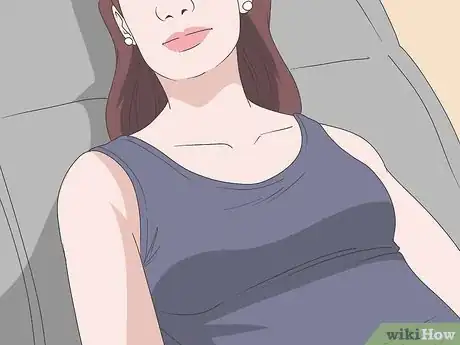

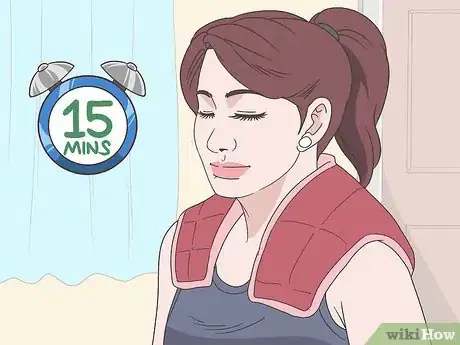
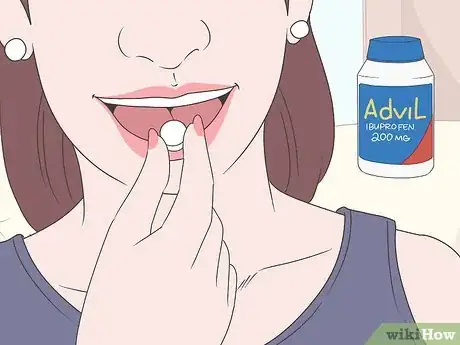
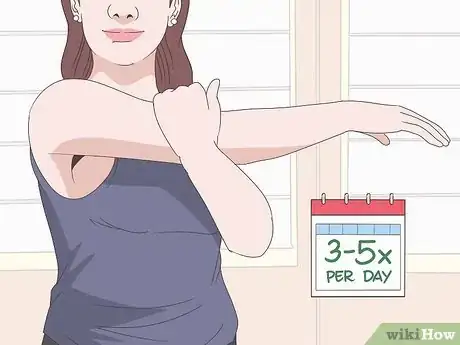
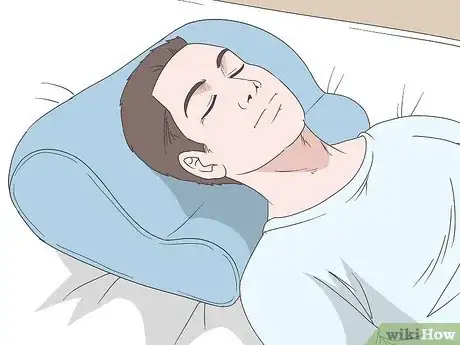


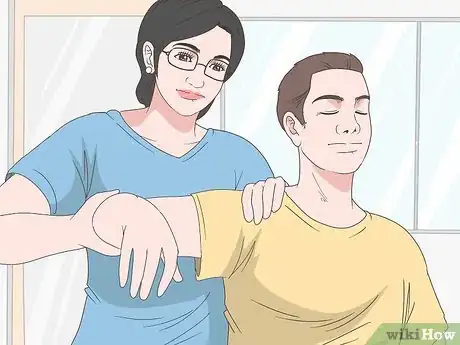

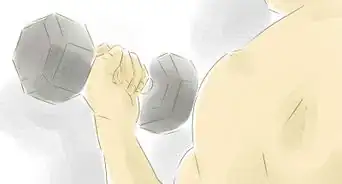


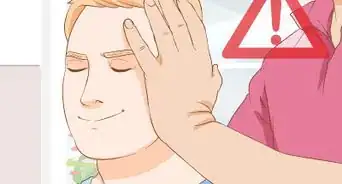
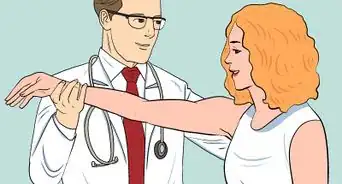
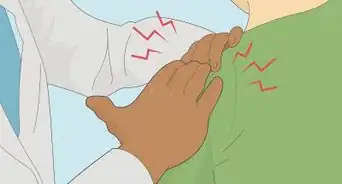



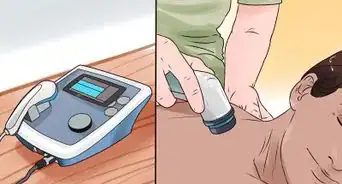

-Step-3-Version-3.webp)


















































Medical Disclaimer
The content of this article is not intended to be a substitute for professional medical advice, examination, diagnosis, or treatment. You should always contact your doctor or other qualified healthcare professional before starting, changing, or stopping any kind of health treatment.
Read More...